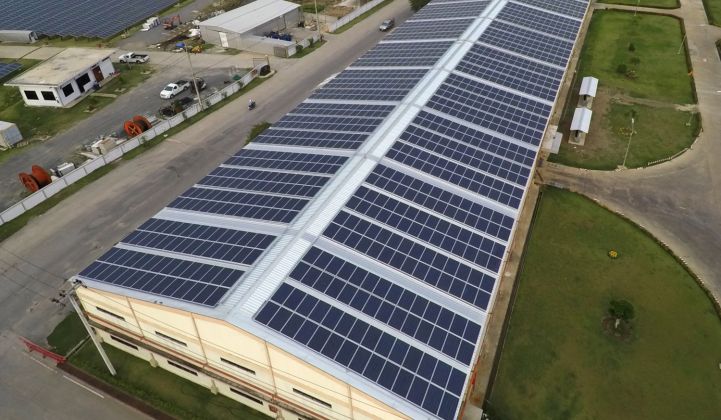The U.S. non-residential market segment saw 2.1 gigawatts of PV installed in 2018, down 8 percent from its record-breaking 2017.
In a new report, Wood Mackenzie Power & Renewables Senior Solar Analyst Michelle Davis describes how the non-residential segment* is becoming more diverse and nuanced, requiring both flexibility and efficiency from installers, developers, asset owners and financiers.
We sat down with Michelle to discuss some key findings from her research.
GTM: The commercial solar market in the U.S. has seen its fair share of ups and downs over the last few years. What can we expect from the segment going forward?
Michelle Davis, Wood Mackenzie Senior Solar Analyst: The commercial solar market is expected to shrink in the near term as major states provide less fertile ground than in prior years. For the past several years, the commercial solar market has been concentrated in five key state markets: California, Minnesota, Massachusetts, New York and New Jersey.
In 2018, the commercial solar market shrank by 8% and is expected to shrink by another 13% in 2019 as opportunities in these markets diminish due to less favorable rate structures and incentive programs.
In the longer term, increasing commercial solar opportunities will begin to emerge in growing state markets like Texas, Illinois and Colorado.
GTM: Which types of companies are thriving in the commercial solar segment today?
MD: Developer-owners maintained more than double the market share of asset owners who only acquired projects in 2018. It was no surprise that developers who own their projects and control more steps of the project development cycle installed the most capacity in 2018.
Increasingly, companies have been investing in early-stage development capabilities in order to reduce transaction costs, speed up development timelines, and capture the most value from each project. This was showcased last year as NextEra Energy — arguably the most vertically integrated developer-owner — claimed the top spot in WoodMac’s 2018 commercial solar asset ownership rankings.
In those same rankings, Tesla placed second, while WGL, Greenskies (Clean Focus Yield), and AES rounded out the top five.
GTM: Are you seeing any trends in how these projects are financed?
MD: The commercial solar market became 58% third-party financed in 2018, up from just 35% in 2015. Despite expected market contraction, opportunities for growth exist where financiers and developers can be flexible about financing requirements as the third-party-owned market grows. A flood of investment capital is putting pressure on financiers to expand previously held notions of the addressable market, and commercial customers have an appetite for viable solar projects that help them meet their sustainability commitments.
GTM: How can developers and asset owners scale their commercial solar operations?
MD: Commercial solar will never be a standardized commodity — and market participants shouldn’t try to make it one. Commercial solar customers are becoming more diverse, not less, as developers and financiers look beyond the most financeable projects with investment-grade customers. Efforts to standardize project development and financing can only go so far, meaning that flexible and adept developers and owners will benefit.
***
*According to Wood Mackenzie's report, the spectrum of non-residential offtakers typically includes commercial, industrial, agricultural, school, government and nonprofit customers. A "community solar" system is defined as non-residential as well.
The report is available to subscribers of Wood Mackenzie's U.S. Distributed Solar Service.
Michelle will be on stage at GTM's Solar Summit discussing financial risk in solar and managing project margins throughout the ITC phase-down. See the agenda and register here.




